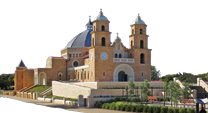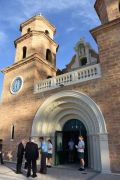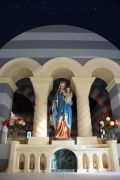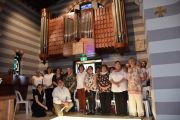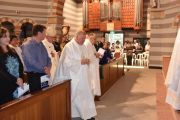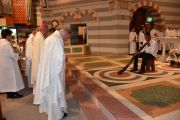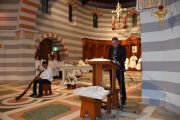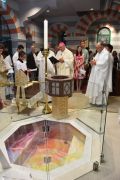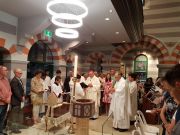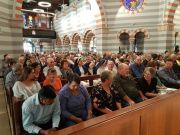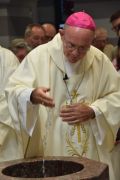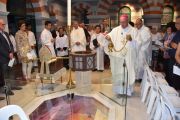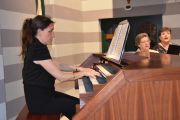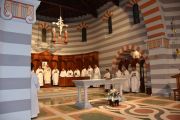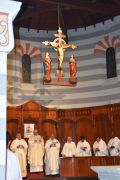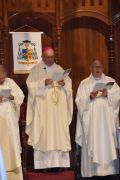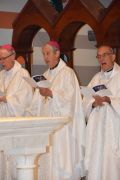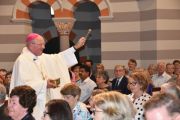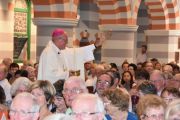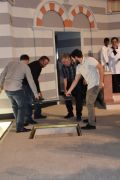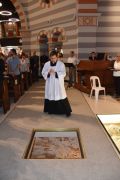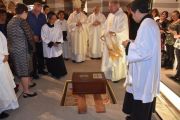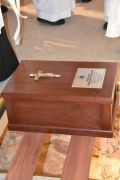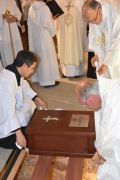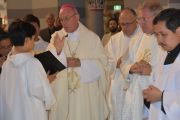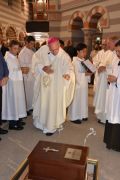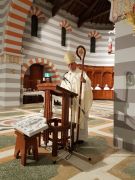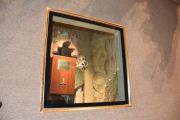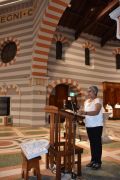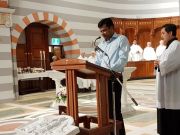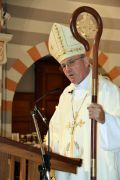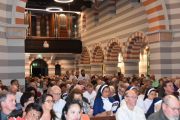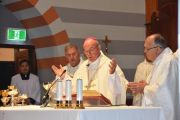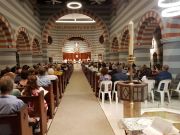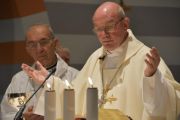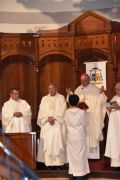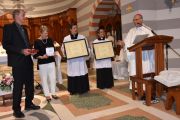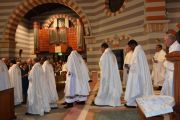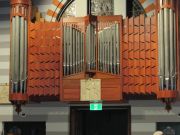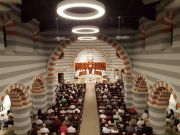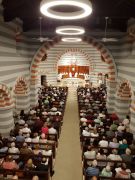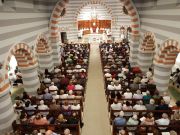
By Josh Low
Geraldton’s St Francis Xavier Cathedral blessed and rededicated
Having a Cathedral as a sacred space in which the presence of God is visible, was the message, Bishop of Geraldton, Michael Morrissey said at the blessing and re-dedication of St Francis Xavier Cathedral in Geraldton last week.
Held on 22 November, the principal celebrant of the concelebrated Mass was Bishop Morrissey who was joined by Emeritus Bishop of Geraldton, Justin Bianchini, Emeritus Archbishop of Perth and former Bishop of Geraldton, Barry Hickey, Auxiliary Bishop of Perth, Donald Sproxton and priests from the Geraldton Diocese and Perth Archdiocese.
The occasion also saw the reinternment of the human remains of the founding bishop of the Geraldton Diocese, Bishop William Kelly in a crypt built into the floor of the Cathedral where his body was archaeologically discovered and excavated earlier this year.
With the St Francis Xavier Cathedral having been closed for six months while undergoing major conservation, Bishop Morrissey described the occasion as a blessed moment for the Diocese of Geraldton.
He acknowledged the hard work carried out over the years by many who were present on the day, and explained that the building was the dream and hope of Bishop Kelly at a time when Geraldton’s population was ‘at most 2,000 people’.
“Over the past 100 years, this vision has never left us, although at times we have felt it did.
“Tonight, we see that vision with the surrounding Cathedral Precinct become a reality before our eyes,” Bishop Morrissey said.
Bishop Morrissey referenced the words of St Augustine of Hippo, emphasising the significance of the cathedral as a place in which man is provided a space by which he can encounter God.
“What we see accomplished materially in these walls, let that be carried out spiritually in our minds; and what we see perfected in stones and timber, let that be brought to completion in your bodies, with the help of God’s grace as the builder.
“This Cathedral is not a museum but a living building of the presence of God within this community.
“Behind the very evident beauty of this Church, there is a message of Faith, Hope and Love for anyone to see and experience who would come through the door,” he said.
Bishop Morrissey added that Jesus gives us a reminder of reverence for this sacred space in the Gospel of John.
“This is God’s house and all who come will receive life-giving water. When they leave this place, their minds and hearts will be in a better place, open to the other in their lives because they have been touched by the presence of God,” he said.
Director of Heritage for the Diocese of Geraldton, Fr Robert Cross, oversaw the Cathedral Precinct Project and this week spoke to The eRecord.
He explained that the project has seen the completion of external conservation works on the Cathedral, the construction of the Monsignor Hawes Heritage Centre and associated piazza, the construction of the Cathedral forecourt and gardens and the internal conservation and refurbishment of the Cathedral.
Fr Cross reiterated Bishop Morrissey’s message of the cathedral being a vessel from which faith can be seen and experienced, instead of a museum piece.
“It is a place from which we proclaim the Good News and where one encounters God and His beauty – where one encounters His love, mercy and compassion.
“The conservation and restoration works on the Cathedral was about recovering the rich iconographic heritage of the Church that Monsignor Hawes well understood and imbued the Cathedral with,” Fr Cross said.
“Sacred space, art, and iconography have a capacity to deeply touch the hearts and souls of people, particularly when located within their intended context of Sacred Liturgy.”
Fr Cross explained that Mgr Hawes understood the importance of sacred space, art and iconography and their role in the Catholic faith.
He added that the beauty of the Church’s sacred and religious heritage is primarily about evangelisation.
“It was Mgr Hawes’ encounter with these things while journeying as a young man in the 1890’s through the Catholic cathedrals of France that led him to convert to Catholicism,” he said.
“My observation is that many in the Church today – particularly the young, feel a little cheated of the rich sacred artistic heritage of the Church in all its forms; be it built heritage, movable heritage or intangible heritage like music, ritual and liturgy.
“It was the beauty and richness of these things that brought Mgr Hawes himself to the Church,” Fr Cross said.
”After all, the beauty of the Church’s sacred and religious heritage in all its forms is first and foremost about evangelising, bringing people to a close and personal encounter with God; God who is beauty.
“It is this fundamental understanding that ecclesiastical cultural heritage is primarily directed to evangelisation that inspired and drove me in the decisions I have made in project managing the conservation and refurbishment of the Cathedral,” he concluded.
© Photos: Catholic Diocese of Geraldton / Peter Fiorenza
